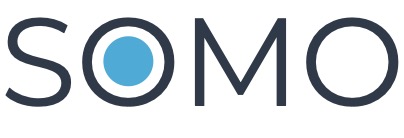Citizen Generated Data (CGD)
1. Steps to Creating a Realistic and Comprehensive Budget for CGD Projects
A comprehensive budget is essential for effectively managing community-driven development (CGD) projects. It ensures that all expenses are accounted for and resources are used efficiently. Here’s how to create a realistic and comprehensive budget:
a. Identify and Classify Costs
Costs in a CGD project are broadly categorized into direct and indirect costs:
-
Direct Costs: These are expenses directly related to the implementation of the project. Examples include:
- Salaries and wages of project staff.
- Materials and supplies needed for activities (e.g., construction materials, educational supplies).
- Travel and transportation costs for staff and participants.
- Consultant fees for experts involved in the project.
- Equipment purchases specifically for the project.
-
Indirect Costs: These are overhead or administrative expenses that support the project but are not directly attributable to a specific activity. Examples include:
- Rent for office space or utilities.
- General administrative staff salaries (e.g., accountants, office managers).
- Insurance and other operational costs.
b. Forecast Income
Estimate your project's income sources. These could include:
- Grants from governmental or non-governmental organizations.
- Donations from individuals or corporate sponsors.
- Crowdfunding or other fundraising efforts.
- In-kind donations (e.g., donated goods or services).
c. Include a Contingency Fund
A contingency fund accounts for unexpected expenses. Setting aside 5-10% of the total budget for unforeseen costs can help mitigate financial risks during the project.
d. Define the Project Timeline
Linking your budget to a timeline helps in scheduling costs. For instance, some expenses, such as purchasing materials or hiring consultants, may occur early in the project, while others (e.g., evaluation costs) may arise later.
e. Use Budgeting Tools
Budget templates and software can help organize and streamline the budgeting process. Some tools specifically designed for non-profits and CGD projects simplify tracking direct and indirect costs.
2. Techniques for Efficient Resource Allocation to Maximize Impact Without Overspending
Efficient resource allocation ensures that project goals are met within the available budget while minimizing waste. Here are key strategies to optimize resource use:
a. Prioritize Spending
- Allocate resources to critical areas: Identify the essential activities that directly impact the project's success and ensure they are fully funded.
- Phased spending: Implement your project in phases, with each phase's funding based on performance and results from previous stages. This reduces upfront costs and ensures resource use is based on need and progress.
b. Leverage In-Kind Contributions
- In-kind contributions, such as donated materials, volunteer labor, or discounted services, can significantly reduce costs.
- Collaborate with community members, local businesses, or partner organizations to access these resources.
c. Implement Cost-Saving Measures
- Bulk purchasing: If possible, buy materials in bulk to benefit from discounts.
- Outsource selectively: For specialized tasks, consider hiring contractors or consultants only when necessary, rather than employing full-time staff.
- Energy-efficient practices: Reduce utility costs by adopting environmentally friendly practices, like using solar power or energy-efficient equipment.
d. Track Resource Use Regularly
Consistently monitor how resources are being utilized to ensure they are aligned with project goals. Regular tracking helps identify areas of overspending or underspending, allowing for timely adjustments.
3. Best Practices for Tracking Expenditures and Adjusting Budgets
Tracking expenditures and making necessary adjustments are critical components of financial management in CGD projects. These practices ensure that projects stay within budget while adapting to evolving circumstances.
a. Use Accounting Software or Budgeting Tools
- Choose financial management software tailored for nonprofits, like QuickBooks Nonprofit or online tools like Excel and Google Sheets.
- These tools allow for real-time tracking of income and expenses and provide easy-to-read reports.
b. Establish a Regular Review Process
- Conduct monthly or quarterly budget reviews to compare actual expenses against the planned budget. This helps identify variances and allows for prompt corrections.
- Variance analysis: Determine where deviations occur between projected and actual spending. Are certain areas under- or overfunded? Investigating these trends can provide insights into resource efficiency and financial management.
c. Adjust Budgets Responsively
- Scenario planning: Prepare multiple budget scenarios (e.g., best-case, worst-case) to accommodate potential financial changes. This foresight allows for flexibility in budget adjustments.
- Reallocate funds as needed: If a particular activity is underutilizing funds or another needs additional resources, redistribute the budget accordingly. However, ensure that such adjustments still align with overall project goals.
- Seek approvals when required: Some funders require approval for budget adjustments. Make sure to follow any donor guidelines when reallocating resources.
d. Create Transparent Reporting Systems
- Internal transparency: Ensure that all team members are aware of the project's financial status. Sharing financial reports with staff fosters accountability and ensures everyone is aligned with the budget.
- External reporting: Prepare regular financial updates for donors and stakeholders, ensuring transparency and maintaining trust in your project.


